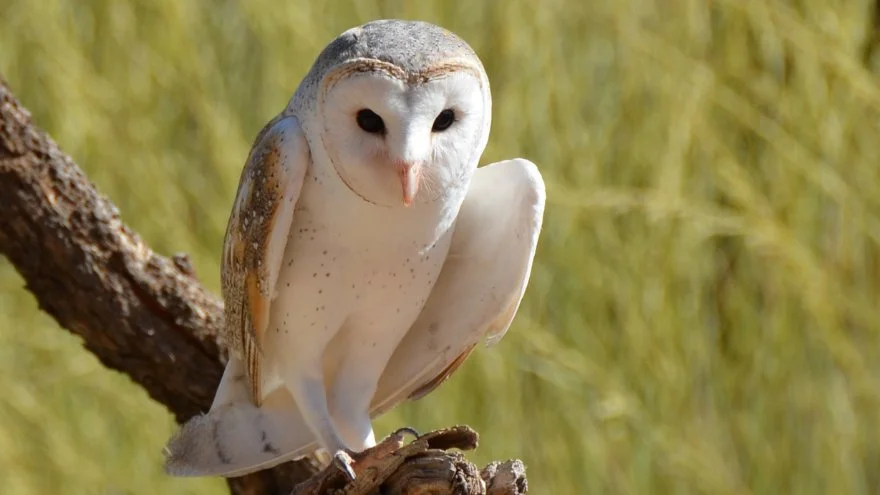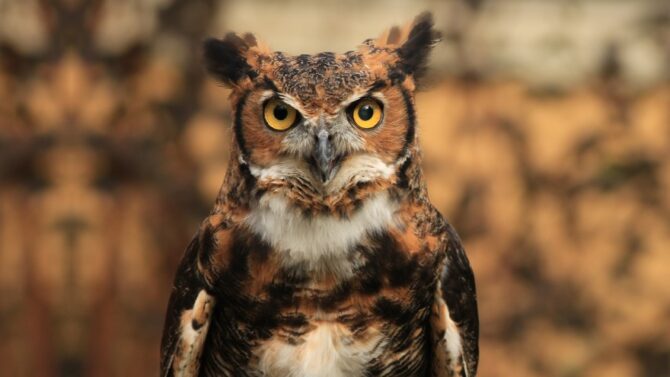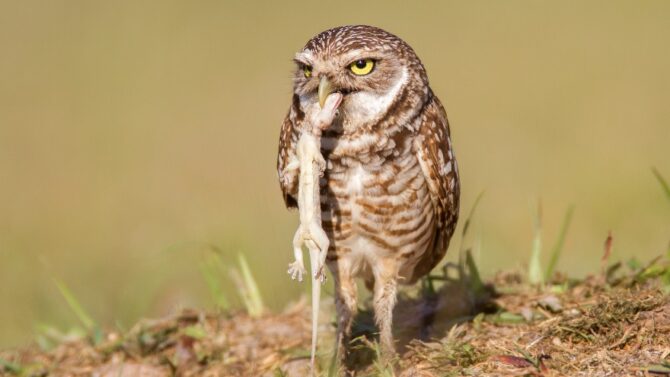The media is littered with millions of owl pictures; hundreds of millions know about the bird’s sharp beak, round, forward-looking eyes, and highly flexible neck that can rotate 270 degrees.
However, there are several facts about owl legs unknown to many. For instance, owl legs are designed for excellent maneuverability when stalking prey in woodlands or engaging in nocturnal hunting.
There are many captivating facts about owls, but this article will delve into some fascinating facts you need to know about their legs.
How Long are Owl Legs?
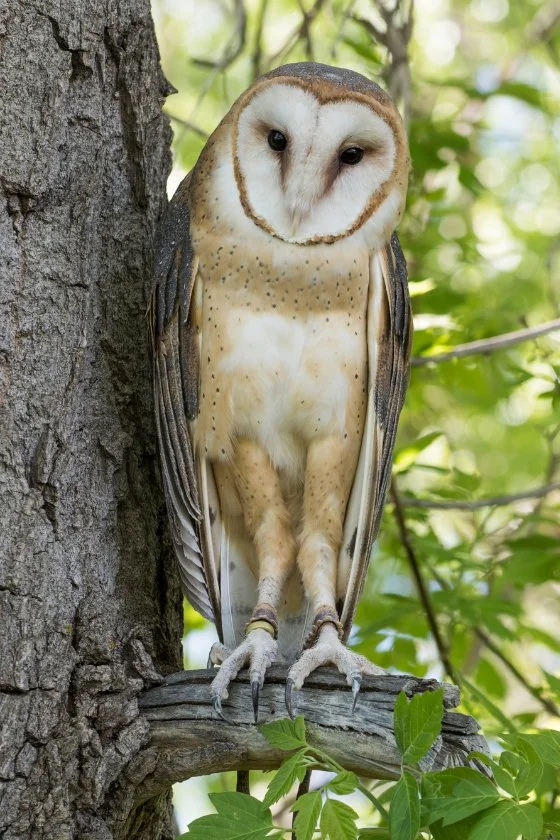
Most owls have their feathers covering their legs, while others have no problem displaying their legs.
Thus, it’s no conventional sight with these birds’ legs; little wonder many find it difficult to believe their eyes when they notice two rather lengthy legs lurking beneath an owl’s feathers.
An owl’s legs reach up to half of its entire body length, although this does vary depending on the owl species, shape, and size.
While these factors make it nearly impossible to predict the exact length of the owl’s leg, its maximum length is almost a foot long.
Owls have long legs rather slender to lessen air resistance while flying. Most muscles in the bird’s legs are located in the thigh, which is closer to the body.
Why Do Owls Have Really Long Legs?
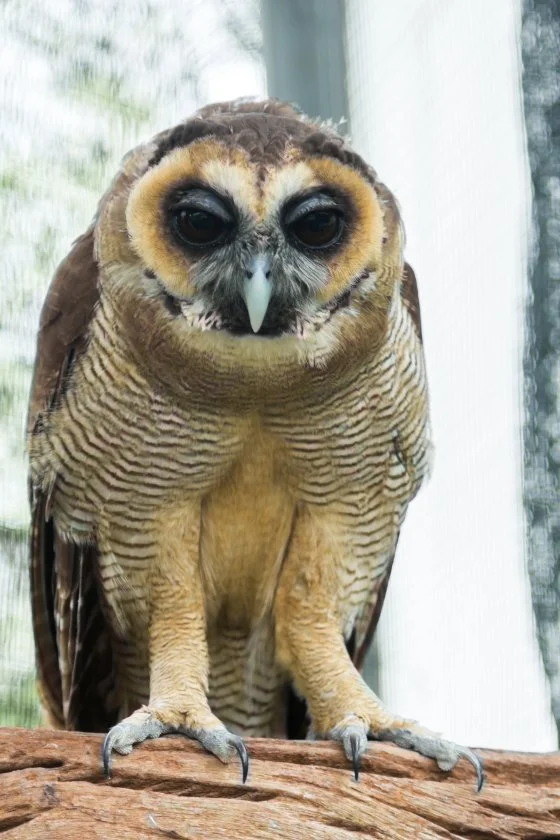
An owl’s legs are not long by chance, but the size of their talons and the functions of their legs aside from flying contribute to its size. Paired with those strong legs are strong talons.
Birds, reptiles, amphibians, giant insects, fish, and other small animals are all prey items for owls to pursue.
Therefore, they catch and kill their prey with their legs and feet by capturing them in their talons and strangling or stabbing them to death.1
Some owl species, like the Great horned owl, prefer small to medium-sized mammals and birds, including hares, grouse, ducks, and small mammals. The owl can carry up to eight to nine pounds of prey.
Do Owls Have Knees?
Indeed, owls have knees. Although most owl species have feathered knees, they do have kneecaps.
One can find an owl’s knee joint between the tibiotarsus (big bone between the femur and the tibia) and the kneecap.
However, because birds’ legs differ slightly from ours, many people mistake owls’ knees for their ankles.
Can Owls Walk?
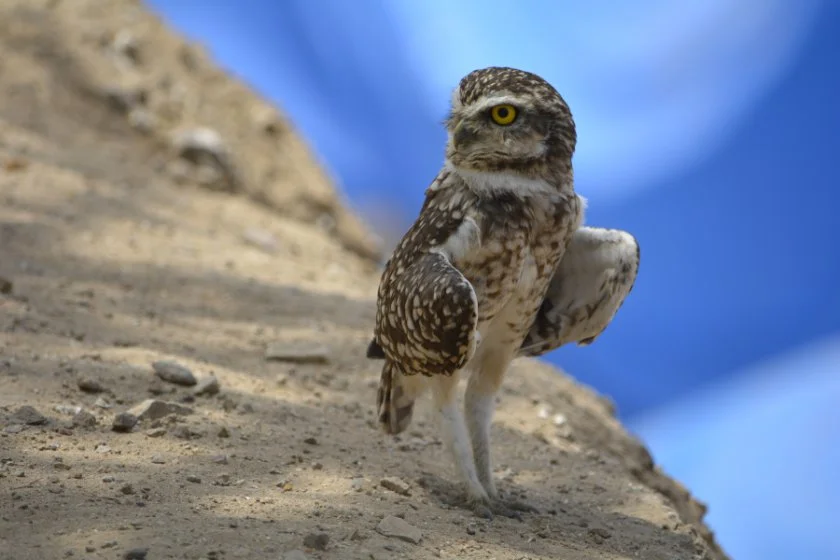
Owls can run and even walk on the ground thanks to their powerful legs. Some species, like burrowing owls, spend time on the ground where they hunt by walking fast or even running to capture their prey.
While others are largely arboreal, spending their time in trees. However, a general rule about these birds is that they do not spend unnecessary time on the ground, where they are exposed to predators.
Can Owls Walk Backward?
Yes, Owls can walk backward without any issue. They are zygodactyl as each of their feet have two toes pointed forward and two toes pointed backward.2
The owl’s feet structure gives it decent balance and allows it to walk in different directions without problems.
Do Owls Have Feathers On Their Legs?

Most owl species have feathers on their legs, but species geographically distributed to colder regions, like the snowy owl, develop feathers on their feet and toes to keep warm and shield their sensitive flesh from harm.
The feathers on an owl’s legs diminish the sound it produces when flying low to capture prey. Additionally, it can aid the bird in blending in with its surroundings.3
Hands as Feet
Indeed, owls use their feet the same way a hand would. An owl uses its feet and legs to feed itself after it captures its prey.
The owl directs its prey to its beak using its talons. Parent owls also use their legs to hold their prey immobile while tearing off bits of meat to feed their offspring.
Can Owls Legs Function as a Clamp?
Owls can clamp on a perch so their muscles can relax while resting or sleeping. Owls’ feet and legs support perching on ledges and small branches.
While an owl’s feet are closed at rest, a human’s hands are open, making it easier to spend a lot of time holding onto a tree branch.
Frequently Asked Questions
Do owls walk or hop?
Owls can walk and hope but prefer walking to hopping on the ground. However, they do not spend unnecessary time on the ground.
What are owl legs called?
Owl legs have no specific or scientific name. Therefore, they are known as “legs.”
Do owls sleep on one leg?
Owls often raise one foot when they sleep or rest; they also alternate raising their feet into their feathers for insulation and warmth.
Do owls sleep standing up?
Most owls can clamp on a perch; thus, they sleep perched on a tree branch while standing upright or snugged into holes in trees.
Wrap Up
For years, many people have remarked on and pondered the owl’s peculiar structure.
You might be among the many that find an owl’s legs odd. But knowing these wonderful facts about the owl’s leg will now make you appreciate its unique nature.
References & Notes
- Silling C. How Owls Hunt. Gulf Coast Bird Observatory.
- Botelho F. J., Smith-Paredes D., Et. al., (2014). The developmental origin of zygodactyl feet and its possible loss in the evolution of Passeriformes. Proc. R. Soc. B.
- Ogden E. L. The Silent Flight of Owls, Explained. Audubon.
